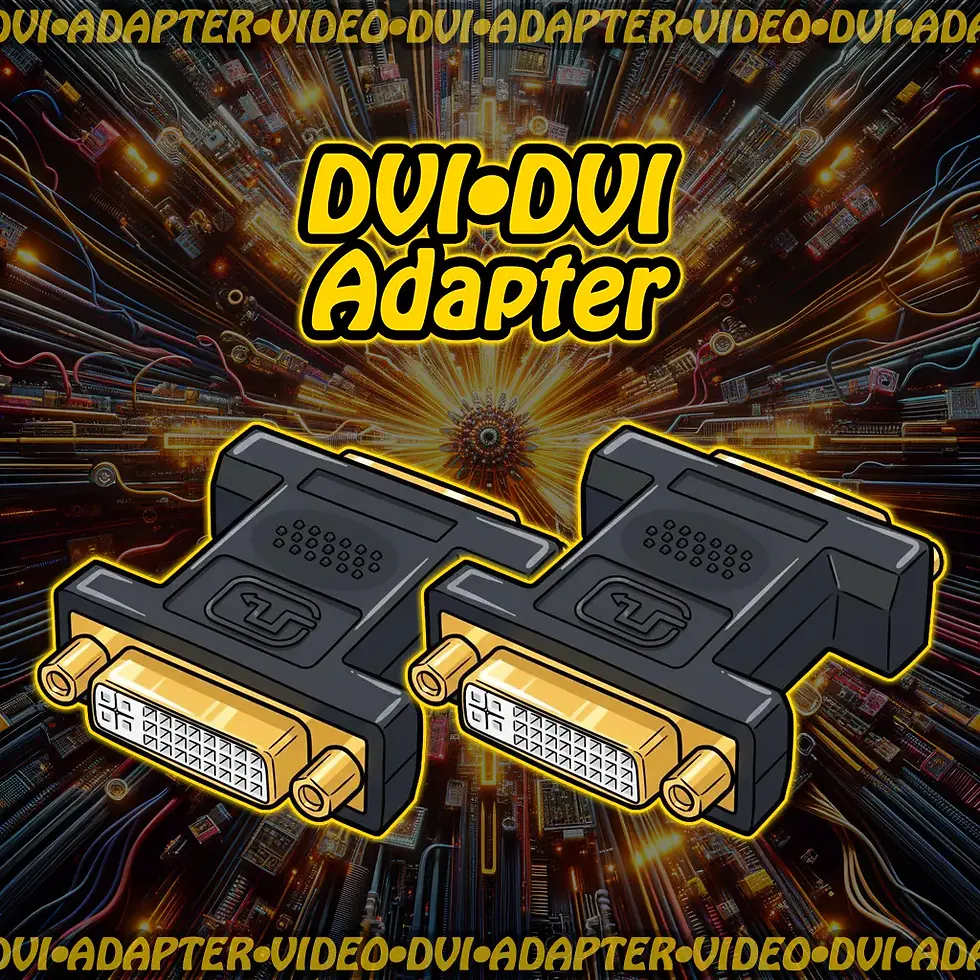🧠🔌 DVI • DVI Adapter
This adapter joins two male DVI cables, allowing you to extend cable length or convert a male connector into a female port. It supports DVI-D (digital only) and DVI-I (digital + analog) formats, depending on pin configuration.
🔧 Adapter Format & Use Case
- 🔌 DVI Female → DVI Female
- Accepts two male DVI cables
- Use Case: Extend DVI cable runs or adapt male connector to female port
🖥️ Compatible Devices
- 💻 Desktop PCs, workstations, and legacy laptops with DVI output
- 📺 Monitors and projectors with DVI input
- 🧠 AV switchers, extenders, and wall plates
- 🛠️ Test benches, diagnostic stations, and modular AV racks
✅ Common Uses
- 🧠 Join two male DVI cables for longer reach
- 🛠️ Convert male DVI connector into female port
- 🔁 Adapt gender mismatches in AV setups
- 🎥 Extend signal from GPU to monitor or projector
- 🧪 Modularize AV routing in legacy systems
🧠 Signal Format Notes
- ⚙️ DVI-D: Digital video only
- ⚙️ DVI-I: Digital + analog (compatible with VGA adapters)
- 📉 Supports single link (up to 1920×1200) and dual link (up to 2560×1600)
- 🔊 No audio—DVI does not carry sound
- 🔁 Adapter does not convert signal—only joins or changes gender
⚠️ Things to Watch Out For
- 🚫 Not compatible with HDMI or VGA without active conversion
- 📉 Signal degradation possible with long cable chains
- 🔌 Match pin layout—DVI-D vs DVI-I vs DVI-A
- 🧯 Avoid stacking multiple adapters—can cause instability
- 🧪 Check for HDCP issues if using with protected content
🛠️ Quick Tips for Beginners
- 🧠 Identify DVI type by pin layout:
- DVI-D: 24+1 pins
- DVI-I: 24+5 pins
- 🔍 Use gold-plated connectors for better contact and durability
- 🧼 Clean ports gently—dust can cause flickering or sync issues
- 🏷️ Label adapters clearly in multi-format setups
- 🎨 Use in AV racks, wall plates, or tight installations where gender flip is needed



